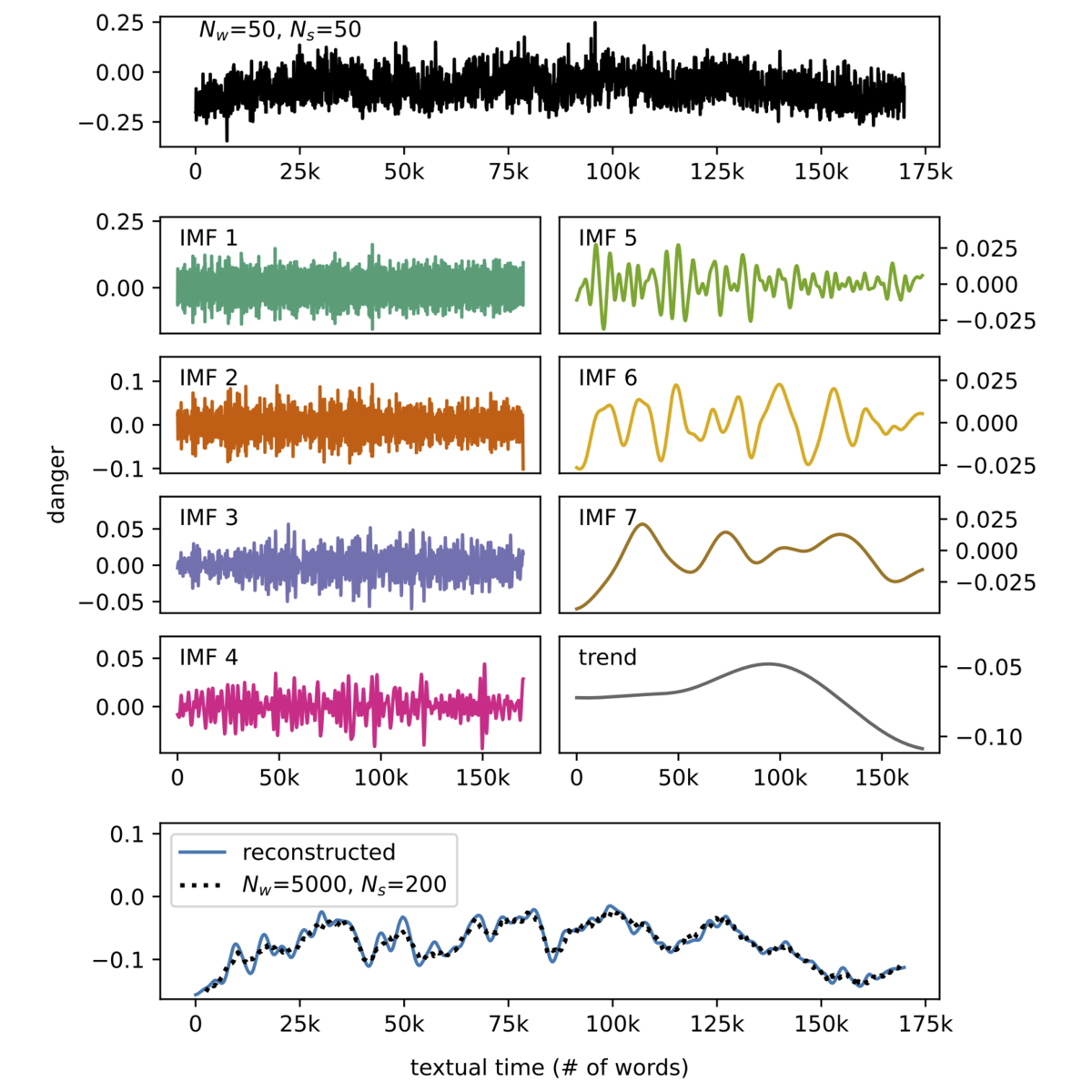A decomposition of book structure through ousiometric fluctuations in cumulative word-time
M. I. Fudolig, T. Alshaabi, K. Cramer, C. M. Danforth, and P. S. Dodds
Nature Humanities and Social Sciences Communications, 10, 187, 2023

Times cited: 8
Abstract:
While quantitative methods have been used to examine changes in word usage in books, studies have focused on overall trends, such as the shapes of narratives, which are independent of book length. We instead look at how words change over the course of a book as a function of the number of words, rather than the fraction of the book, completed at any given point; we define this measure as "cumulative word-time". Using ousiometrics, a reinterpretation of the valence–arousal–dominance framework of meaning obtained from semantic differentials, we convert text into time series of power and danger scores, with time corresponding to cumulative word-time. Each time series is then decomposed using empirical mode decomposition into a sum of constituent oscillatory modes and a non-oscillatory trend. By comparing the decomposition of the original power and danger time series with those derived from shuffled text, we find that shorter books exhibit only a general trend, while longer books have fluctuations in addition to the general trend. These fluctuations typically have a period of a few thousand words regardless of the book length or library classification code but vary depending on the content and structure of the book. Our findings suggest that, in the ousiometric sense, longer books are not expanded versions of shorter books, but rather are more similar in structure to a concatenation of shorter texts. Further, they are consistent with editorial practices that require longer texts to be broken down into sections, such as chapters. Our method also provides a data-driven denoising approach that works for texts of various lengths, in contrast to the more traditional approach of using large window sizes that may inadvertently smooth out relevant information, especially for shorter texts. Altogether, these results open up avenues for future work in computational literary analysis, particularly the possibility of measuring a basic unit of narrative.
- This is the default HTML.
- You can replace it with your own.
- Include your own code without the HTML, Head, or Body tags.
BibTeX:
@article{fudolig2023a,
author = {Fudolig, Mikaela Irene and Alshaabi, Thayer and
Cramer, Kathryn and and Danforth, Christopher M. and
Dodds, Peter Sheridan},
title = {A decomposition of book structure through ousiometric fluctuations in cumulative word-time},
journal = {Nature Humanities and Social Sciences Communications},
year = {2023},
key = {language},
volume = {10},
pages = {187},
note = {Available online at
\href{https://arxiv.org/abs/2208.09496}{https://arxiv.org/abs/2208.09496}},
}